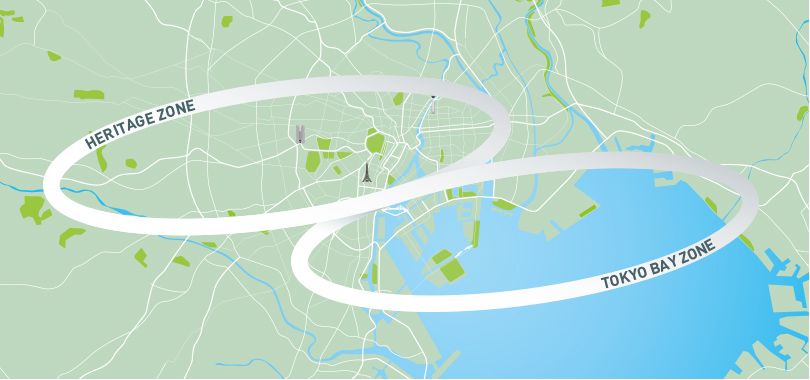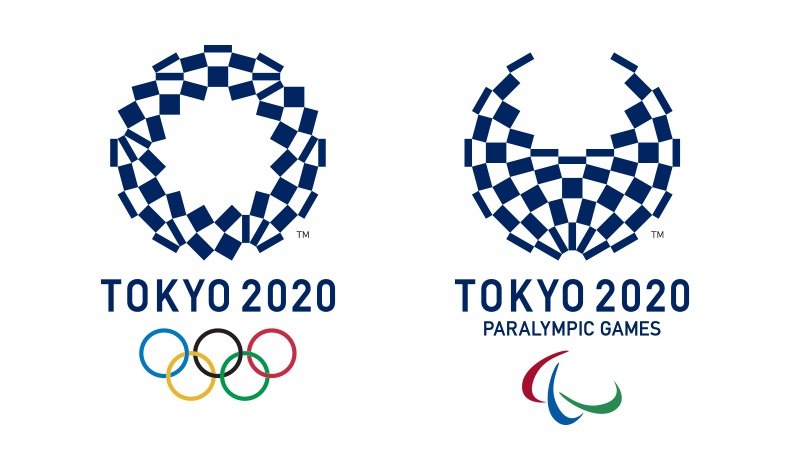The Tokyo Olympics have finally begun! Get all the information on our complete guide including schedules, event details, dates, Tokyo Stadium, other venues and more.
The Olympic Games have a rich history dating back nearly 3,000 years. The first Olympics are dated to 776 B.C. The games were a festival to the god Zeus and were held every four years until they were suppressed in 393 C.E. Truces were enacted so that athletes from different regions could travel to the games in safety.
The International Olympic Committee was founded in 1894, and the first modern games were held in 1896. Like the ancient games, the Olympics are held once every four years, drawing participants from more than 200 nations.
The Paralympic Games are a special aspect of the Olympics. The Paralympics date back to the 1948 Summer Olympics in London, when the 1948 International Wheelchair Games were scheduled to coincide with the opening day. The first official Paralympic Games was held in Rome in 1960.
Table of Contents
What Are the Paralympics?
The Paralympics are one of the largest sporting events in the world. The games include multiple sporting events featuring international athletes, much like the Olympic Games. What makes the Paralympics special is the determination of the athletes who overcome disabilities such as impaired muscle power, impaired passive range of movement, loss of a limb, limb deficiency, leg-length difference, short stature due to a musculoskeletal deficit, hypertonia, ataxia, or athetosis.
Tokyo 2020 Paralympics Schedule (2021)
This year’s Paralympics mark the sixteenth official Paralympic games. This will be the second time the Paralympics have been held in Tokyo. The first took place in 1964 alongside the 1964 Summer Olympics.
Venues
The 2020 Paralympic Games will be held in venues throughout Tokyo. The opening and closing ceremonies will be held at the New National Stadium in the Heritage Zone, the location of the 1964 Olympics. Other venues in this zone include the Nippon Budokan, Tokyo Equestrian Park, Tokyo International Forum, Tokyo Metropolitan Gymnasium, and the Yoyogi National Stadium.

The Tokyo Bay Zone includes the Aomi Urban Sports Venue, Ariake Arena, Ariake Tennis Park, Dream Island Archery Park, Makuhari Messe, Odaiba Marine Park, Olympic Aquatics Centre, Olympic Gymnastics Centre, and Sea Forest Waterway.
Venues outside of these zones include the Musashino Forest Sports Plaza, Asaka Shooting Range, Izu Velodrome, and Fuji Speedway.
| Venue | Sport | Nearest station |
| Olympic Stadium | Opening and Closing Ceremonies Athletics |
Sendagaya Station (Chuo-Sobu line) |
| Tokyo Metropolitan Gymnasium | Table Tennis | Sendagaya Station (Chuo-Sobu line) |
| Yoyogi National Stadium | Badminton Wheelchair Rugby |
Harajuku station (Yamanote Line) |
| Nippon Budokan | Judo | Kundashita station (Tokyo Metro, Toei Subway) |
| Tokyo International Forum | Powerlifting | Yurakucho station, Tokyo station (Yamanote line) |
| Equestrian Park | Equestrian | Chitose-Funabashi station (Odakyu line) |
| Musashino Forest Sport Plaza | Wheelchair Basketball | Tobitakyu station (Keio Line) |
| Ariake Arena | Wheelchair Basketball | Ariake-tennis-no-mori station (Yurikamome Line) |
| Ariake Gymnastics Centre | Boccia | Ariake-tennis-no-mori station (Yurikamome Line) |
| Ariake Tennis Park | Wheelchair Tennis | Kokusai-tenjijo station (Rinkai Line) |
| Odaiba Marine Park | Triathlon | Daiba station (Yurikamome Line) |
| Aomi Urban Sports Park | Football 5-a-side | Aomi Station (Tokyo Waterfront Line, Yurikamome Line) |
| Sea Forest Waterway | Canoe Rowing |
Tokyo Teleport Station, Shin-kiba Station (JR Keiyo Line) |
| Yumenoshima Park Archery Field | Archery | Shin-kiba Station (JR Keiyo Line) |
| Tokyo Aquatics Centre | Swimming | Tatsumi Station, Shiomi Station (JR Keiyo Line) |
| Makuhari Messe | Sitting Volleyball Taekwondo Wheelchair Fencing |
Kaihimmakuhari Station (JR Keiyo Line). |
| Asaka Shooting Range | Shooting | Wakoshi station (Tobu-Tojo Line, Tokyo Metro) |
| Izu Velodrome | Cycling (Track) | Shuzenji Station (Izuhakone Railway line) |
| Fuji International Speedway | Cycling (Road Race: Finish, Individual Time Trial) | Suruga-Oyama Station, Gotemba Station (JR Gotemba Line) |
| Paralympic Village | Tsukishima Station (Tokyo Metro, Toei Subway) | |
| IBC/MPC Tokyo International Exhibition Centre (Tokyo Big Sight) | Kokusai-tenjijo-seimon station (Yurikamome Line) |
Interestingly, Tokyo has been working to increase accessibility, including sidewalks and doorways, in the city as a “legacy project” in advance of the games.
Paralympic Sports

The 2020 Paralympics will consist of 540 events in 22 sports. Several new sports will be added this year, including:
- Badminton
- Taekwondo
These sports will replace 7-a-side or Paralympic football and sailing.
Watch for the following events:
- Archery
- Athletics (which includes running, throwing, and jumping)
- Badminton
- Boccia (a sport based on the precision placement of small balls)
- Cycling (road and track)
- Equestrian
- 5-a-side football
- Goalball (a sport in which a ball with bells is thrown into a goal)
- Judo
- Paracanoe
- Paratriathlon
- Powerlifting
- Rowing
- Shooting
- Sitting volleyball
- Swimming
- Table tennis
- Taekwondo
- Wheelchair basketball
- Wheelchair fencing
- Wheelchair rugby
- Wheelchair tennis
Participants
The Paralympics is a truly international event. Around 4,400 athletes from around the world are expected to participate.
Participating nations and number of athlets:
| Tokyo 2020 Paralympic participants by nation | |||
|---|---|---|---|
| Algeria (12) | Egypt (19) | Lithuania (7) | Senegal (1) |
| Argentina (25) | Ethiopia (1) | Luxembourg (1) | Serbia (9) |
| Australia (45) | Finland (5) | Malaysia (7) | Singapore (2) |
| Austria (1) | France (32) | Mexico (16) | Slovakia (8) |
| Azerbaijan (4) | Germany (53) | Mongolia (2) | Slovenia (2) |
| Belarus (1) | Ghana (1) | Morocco (11) | South Africa (13) |
| Belgium (11) | Great Britain (93) | Namibia (1) | South Korea (32) |
| Bermuda (1) | Greece (9) | Netherlands (23) | Spain (48) |
| Bosnia and Herzegovina (9) | Hong Kong (8) | New Zealand (20) | Sri Lanka (3) |
| Brazil (98) | Hungary (7) | Nigeria (8) | Sweden (8) |
| Bulgaria (1) | India (22) | North Macedonia (1) | Switzerland (3) |
| Canada (48) | Indonesia (5) | Norway (3) | Syria (1) |
| Chile (5) | Iran (40) | Pakistan (1) | Thailand (24) |
| China (125) | Iraq (5) | Peru (1) | Tunisia (12) |
| Colombia (20) | Ireland (5) | Philippines (1) | Turkey (41) |
| Costa Rica (1) | Israel (13) | Poland (15) | Ukraine (52) |
| Croatia (4) | Italy (32) | Portugal (10) | United Arab Emirates (5) |
| Cuba (3) | Japan (111) | Qatar (1) | United States (105) |
| Czech Republic (4) | Jordan (1) | Romania (1) | Uzbekistan (13) |
| Denmark (15) | Kenya (3) | Rwanda (8) | Venezuela (5) |
| Ecuador (4) | Libya (1) | Saudi Arabia (1) | |
Individually cleared Russian athletes will be participating as Neutral Paralympic Athletes.
2020 Summer Paralympic Logo
The logo or emblem of the 2020 Paralympics is a traditional Japanese hand fan in circle form, embellished with a dark blue checkerboard pattern. It depicts the games as “the source of a fresh new wind refreshing the world as well as a shared experience connecting diverse hearts and minds.”

The medals will be made of recycled materials. Each contains the Paralympic logo as well as the words “Tokyo 2020” in braille. Indentions on the sides of the medals indicate the placement – one for gold, two for silver, three for bronze.
The mascot Someity also represents the 2020 Paralympics. Her pink and white design was inspired by the Japanese cherry blossom.

Attending the Summer 2020 Paralympics
Tickets to the 2020 Paralympics are being awarded to residents of Japan on a lottery basis through the Tokyo 2020 official ticket website. Authorized ticket resellers in other countries can also be accessed there. If you plan to attend, be sure to make your travel reservations early, as accommodations will likely sell out.

